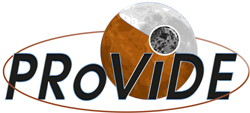Historic Apollo surface photography in conjunction with recent image data taken by the LROC (Lunar Reconnaissance Orbiter Camera), represent a unique opportunity to greatly improve historic maps of the Apollo landing sites. Based on panoramic image sequences taken by the astronauts on the lunar surface, prominent landmarks as well as astronaut equipment can be identified and verified in rectified high-resolution LROC (Lunar Reconnaissance Orbiter Camera) images (0.25-0.5 m/pixel image resolution).As a recent pilot study at TUB (Technical University Berlin) has shown [83], precise astronaut positions can be determined to within one LROC (Lunar Reconnaissance Orbiter Camera) ortho-image pixel by applying least-squares adjustment techniques to measurements made in the Apollo panoramas and in LROC (Lunar Reconnaissance Orbiter Camera). Accurate coordinates of landing site features (Figure 6) are derived in the lunar body-fixed Mean Earth/Polar Axis (ME(Mean Earth)) Reference frame to improve the geodetic control in these areas [82].
Furthermore, DTMs (Digital Terrain Models) with a grid spacing of 1.5 m and ortho-images of lunar landing sites can be generated from LROC (Lunar Reconnaissance Orbiter Camera) data. They are accurately referenced to ALSEP (the Apollo Lunar Surface Experiment Package) instruments, currently representing the most accurate known control points on the Moon. Corresponding topographic data provided by LOLA (Lunar Reconnaissance Orbiter’s Laser Altimeter) are co-registered to LROC (Lunar Reconnaissance Orbiter Camera) data by matching appropriate LOLA (Laser Altimeter) tracks to the referenced LROC – DTMs (Lunar Reconnaissance Orbiter Camera – Digital Terrain Models).

Figure 6: Measurements made within Apollo surface images (here: Apollo 17 ALSEP (Apollo Lunar Surface Experiment Package) area) were used to determine surface feature and astronaut positions (cs…central station, r2…rock2, rG3…rock at geophone-3, GR… Geophone Rock. Right: Apollo 17 landing site features were identified in 0.5 m/pxl resolved LROC (Lunar Reconnaissance Orbiter Camera) ortho-images. The center of the net of angles depicts the astronaut’s position while taking an ALSEP (Apollo Lunar Surface Experiment Package) panorama (LM…lunar module, cs…central station, r1…rock1, rG3…rock at geophone-3, r2…rock2, GR…Geophone Rock, r3…rock3) Elevations refer to the mean Lunar radius of 1,737.4 km



